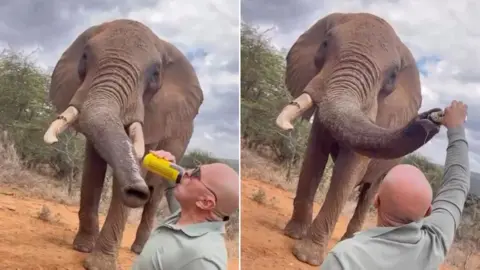A recent study has unveiled that a novel approach to rhino conservation—removing their horns—has led to a staggering decrease in poaching incidents across Southern African reserves. While extensive resources have been allocated towards militarized ranger units and high-tech surveillance systems to combat wildlife crime, the simple tactic of dehorning has proven to be remarkably effective in safeguarding these majestic creatures from poachers, particularly those in search of rhino horns for the Asian market.
Published in the journal Science, the research found that dehorning resulted in a 78 percent reduction in poaching efforts across eight reserves. This stark contrast highlights the limitations of traditional law enforcement approaches; despite numerous arrests of poaching suspects, they did little to deter the ongoing slaughter of rhinos. Timothy Kuiper, a statistician and nature conservation expert at Nelson Mandela University who led the study, emphasized the need for a strategic reassessment of conventional anti-poaching methods, especially given their limited impact on reducing rhino fatalities.
The findings resonate with the ongoing debate surrounding the efficacy and ethicality of dehorning practices. Vanessa Duthé, a postdoctoral researcher at Harvard focused on rhino studies, acknowledged the pressing need for empirical data on dehorning and its effectiveness versus its projected costs. The research substantiates that the advantages of eliminating rhino horns decisively outweigh the associated challenges, presenting a viable solution to the poaching crisis.
Dehorning, which became increasingly popular a decade ago as rhino poaching surged, involves a procedure where the animals are sedated and the tips of their horns are carefully removed, ensuring it is painless. The horns eventually regenerate, typically within 18 months, allowing for continual protection against poachers while preserving the species.



















